I arrived in Germany just as The New York Times declared that the German government had collapsed. I made my way to the city my grandfather grew up in on three trains, noticing commuters doing one of three things—checking their phones; reading an actual book; or eating small sandwiches on brown bread, apparently getting an early start on lunch. Nothing seemed to be collapsing.
Bremen’s famed Christmas market, earlier this week.
In 1932, my grandfather heard Hitler—then a candidate—speak in Bremen, the city where he grew up. He hid beneath a bench and listened to what he had to say in his campaign speech, but what my grandfather always told me about were the crowds. He focused not on Hitler but on the reaction of his listeners.
“They were ecstatic,” he told me, when I asked 60 years later. “They were wild—wild with ecstasy.” He knew then that Hitler and his ideas would take over.
I thought of my grandfather on all three trains. What ideas might be taking over, now?
Hitler greeting a woman at Bremen’s airport. The U.S. Holocaust Museum provides a date—July 20, 1932. This was the day my gtandfather heard candidate Hitler speak, in person.
I was curious and in all honesty a bit scared to see. The German economy, I kept reading, was on shaky ground. Like everywhere in Europe, the far-right is gaining strength here, and of course, the recent dramatic collapse of the Assad regime in Syria meant a new world for the one million Syrian refugees who have resettled in Germany.
Looking up at the Christmas market, Bremen. The medieval old town is largely still intact.
I saw the magnificent holiday markets that my grandfather described; the medieval old town; and some surprising stickers and graffiti, which I share here, because I think you might find it as fascinating as I did.
Right in front of a medieval church in Bremen, I noticed that local teenagers liked to sit on a particular bench. Finally, they all got up and I could see what was scrawled there. It said: “there is no place for fascism here,” or perhaps “no seat for fascism here.”
No seat for fascism here.
I spent days walking through Bremen’s centuries-old city center, and also came across these stickers. They expressed the opposite view of many college campuses.
And I had to remind myself that Bremen’s soccer team was a fierce advocate of Hersh Goldberg-Polin, the American-Israeli hostage murdered by Hamas. He had been a huge soccer fan. German soccer fans honor Hersh Goldberg-Polin
Still I was surprised to see these two stickers, both in very easy-to-understand English, in Bremen this week:
And this:
And most fascinatingly, this pole. Take a look at the top sticker, in red, blue, and white. I quickly wrote my brother, a German translator, for help understanding the symbol, but Wikipedia has a useful entry explainining what the VVN-BdA means. For me, the past and present were coming together as I looked at this sticker.
“The Association of Persecutees of the Nazi Regime – Federation of Antifascists (German: Vereinigung der Verfolgten des Naziregimes – Bund der Antifaschistinnen und Antifaschisten) (VVN-BdA) is a German political confederation founded in 1947 and based in Berlin. The VVN-BdA, formerly the VVN, emerged from victims' associations in Germany founded by political opponents to Nazism after the Second World War and the end of the Nazi rule in Germany. “ (Wikipedia)
And look—that sticker is just above a sticker condemning Hamas.
This was a challenging trip. I was afraid to come here after October 7th. Like everyone else, I had read accounts of Jews being attacked in Europe. I tried to keep a low profile walking the streets, looking through archives, finding painful material. And yet—there were sources of light. At the city’s central library, which once was the main police station, there was a “Jewish Conversation” that was packed. The police, not the Gestapo, had deported my family. On this trip, I read their official deportation notice for my great-grandparents and my grandfather’s four brothers. The only way to describe it is chilling. They had two days’ notice, not that it helped.
I found myself making copies of chapters on the police’s conduct 1933-1945. But in the police’s old home, a Jewish professor was speaking to a rapt audience, about a fable that could be seen from both Jewish and Christian perspectives.
The door to the old central police station, this week. Himmler visited this place. It’s now a library.
Packed house for “Jewish Conversations” in Bremen, this week.
As I walked back to my hotel—I no longer have a family home in Bremen—I noticed lights accompanying me. All the way downhill from the beautiful renovated library, or should I say, huge, forbidding former police station, along a street that used to be a medieval wall that held the city in, there are animal sculptures made of light. I thought this reindeer was particularly beautiful.
Wishing light to all of us, no matter what we celebrate. Chag sameach!
********************************************************************************************************
Hope you enjoyed this newsletter! Thank you for your support of writing with depth.

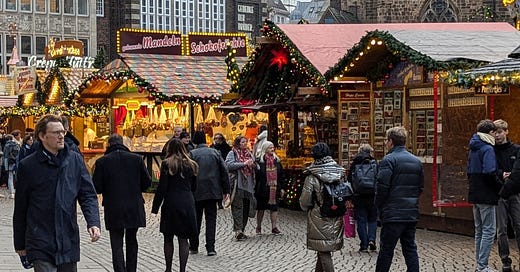



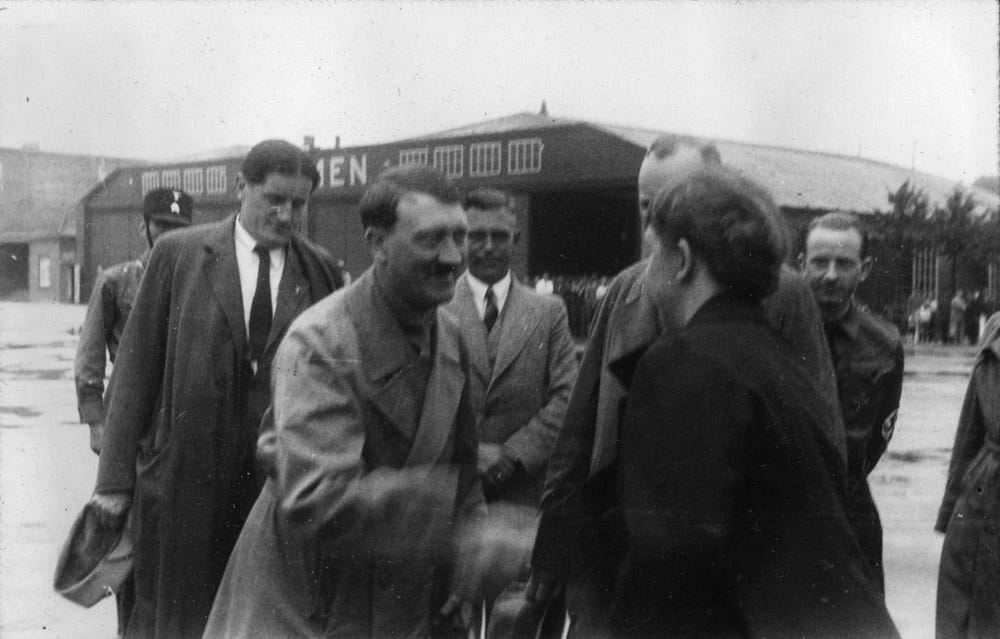
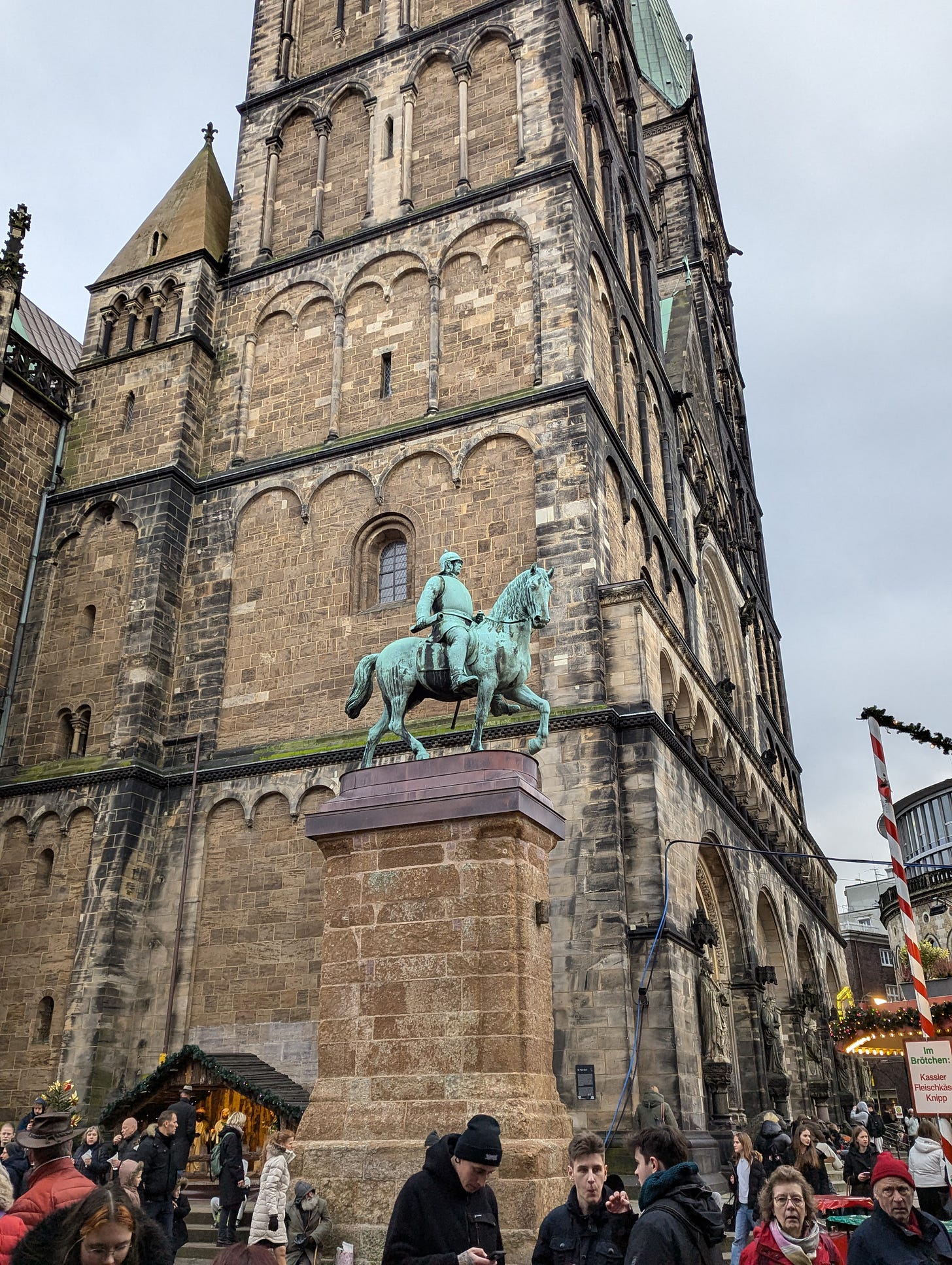
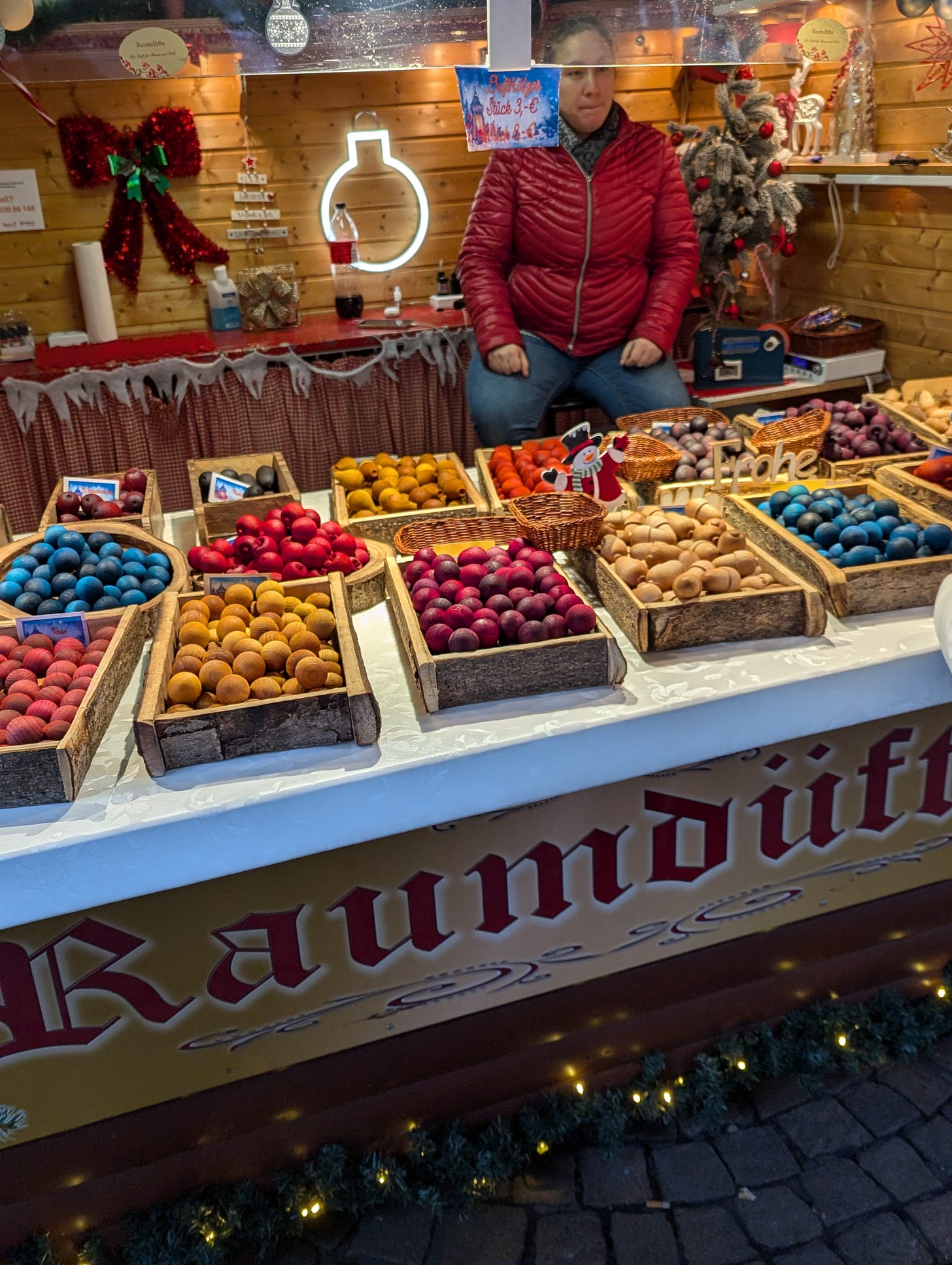
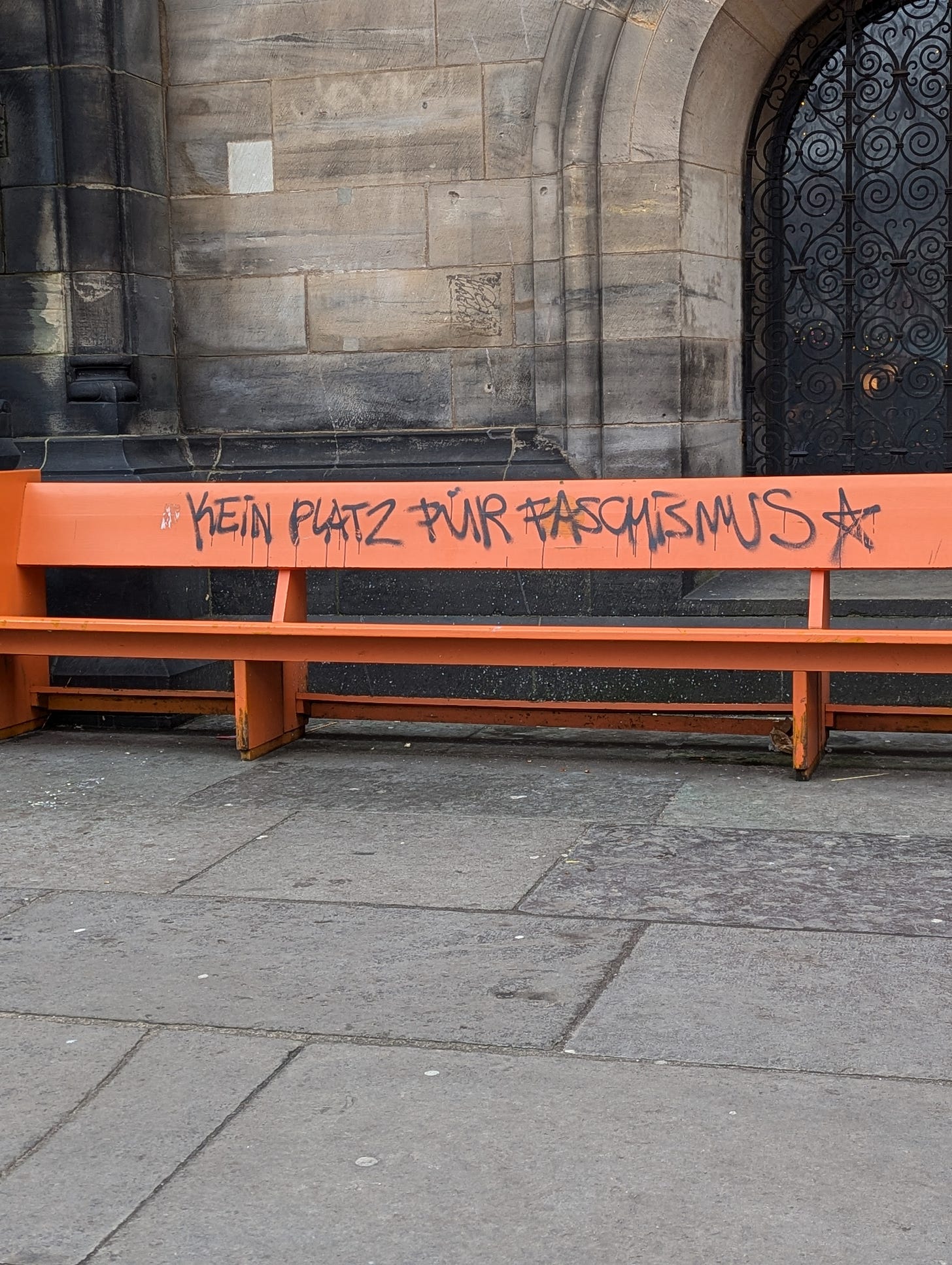
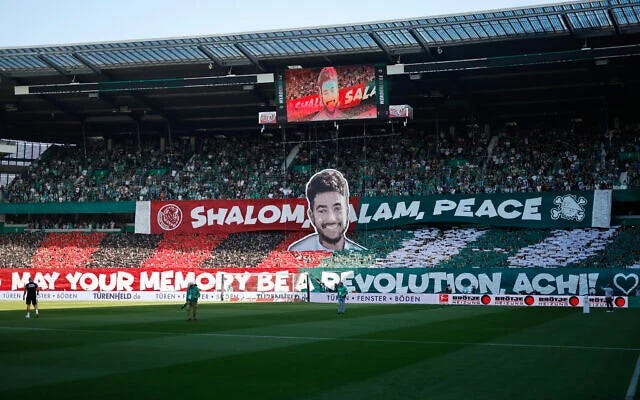
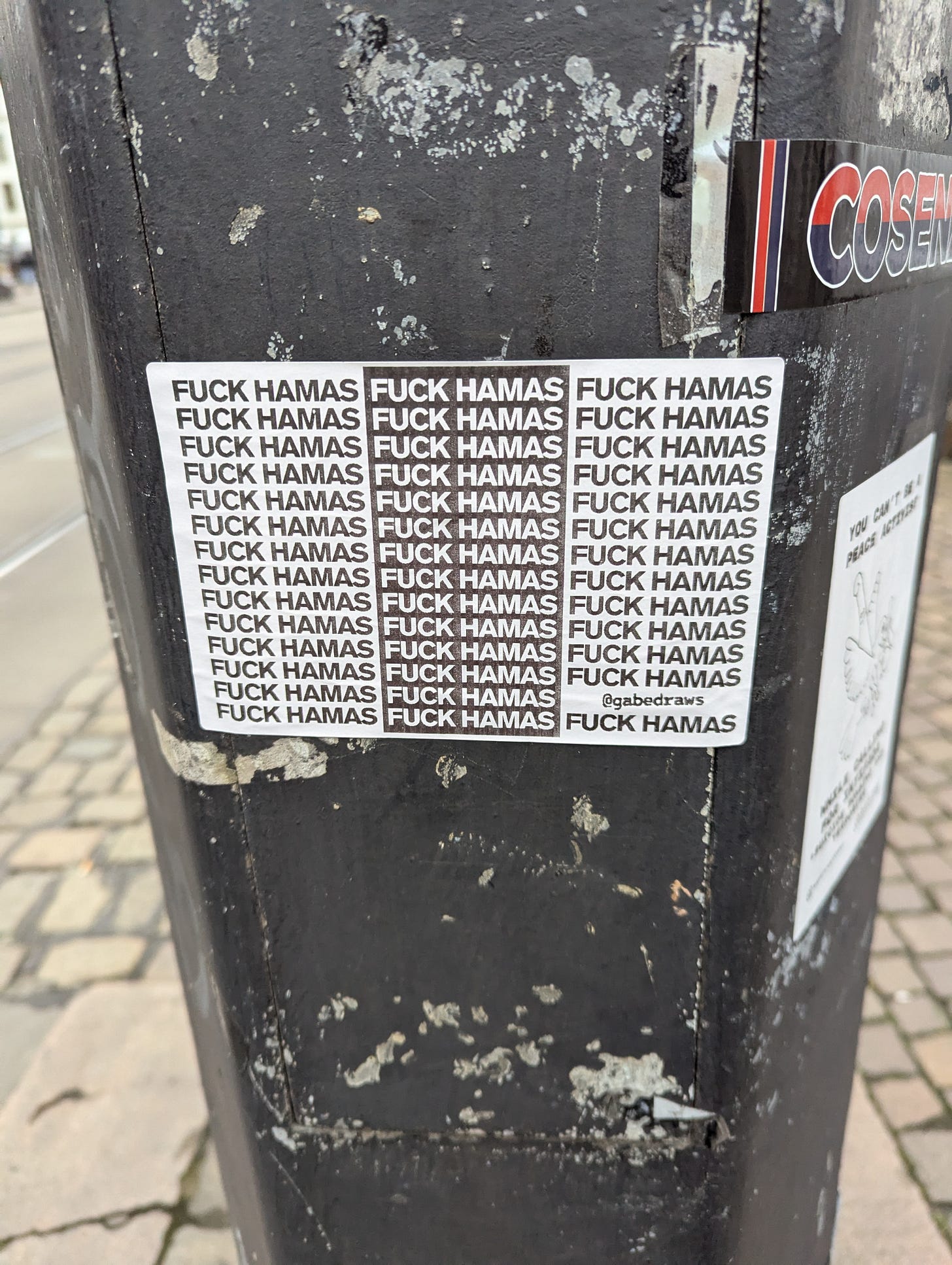
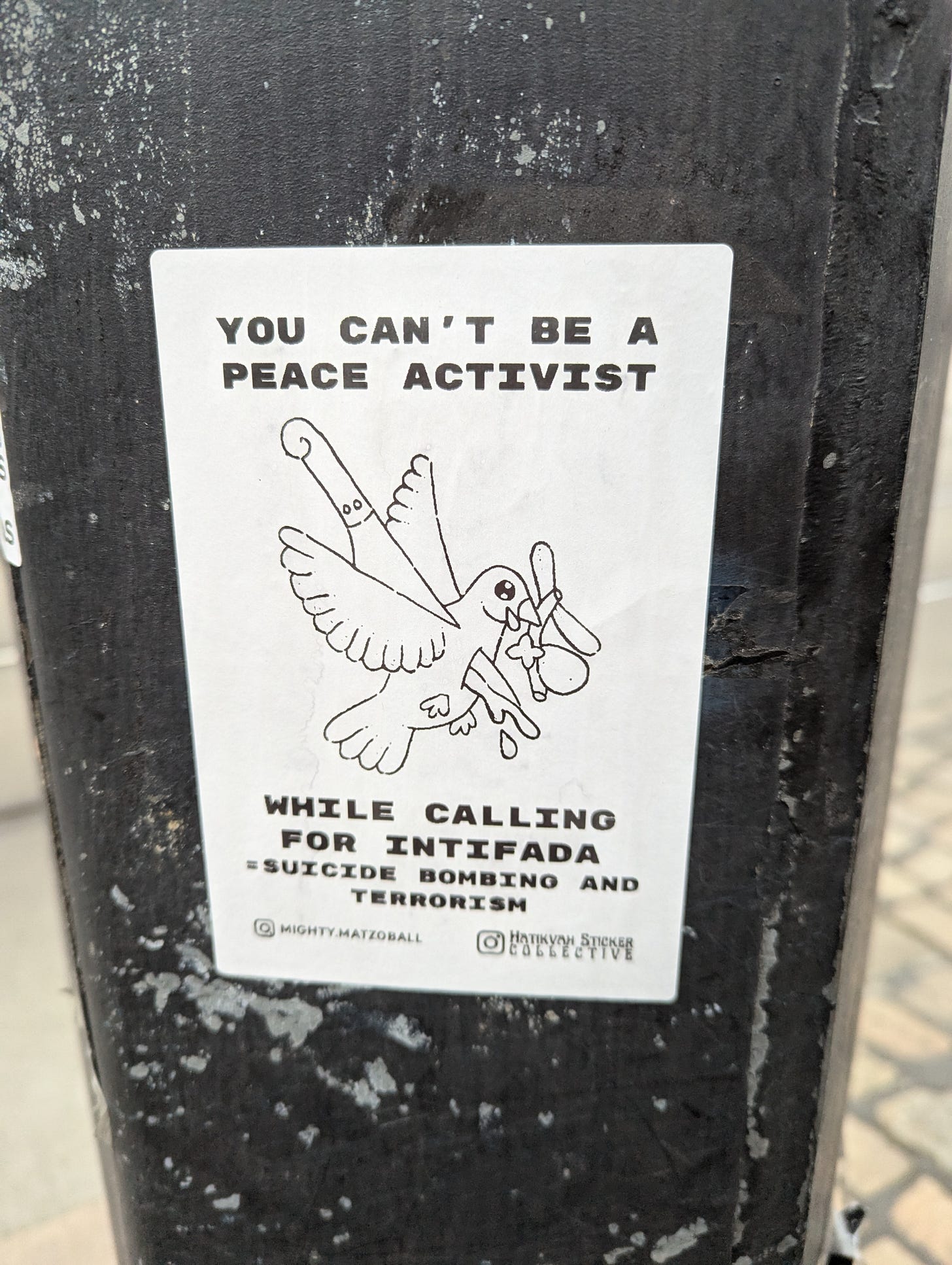
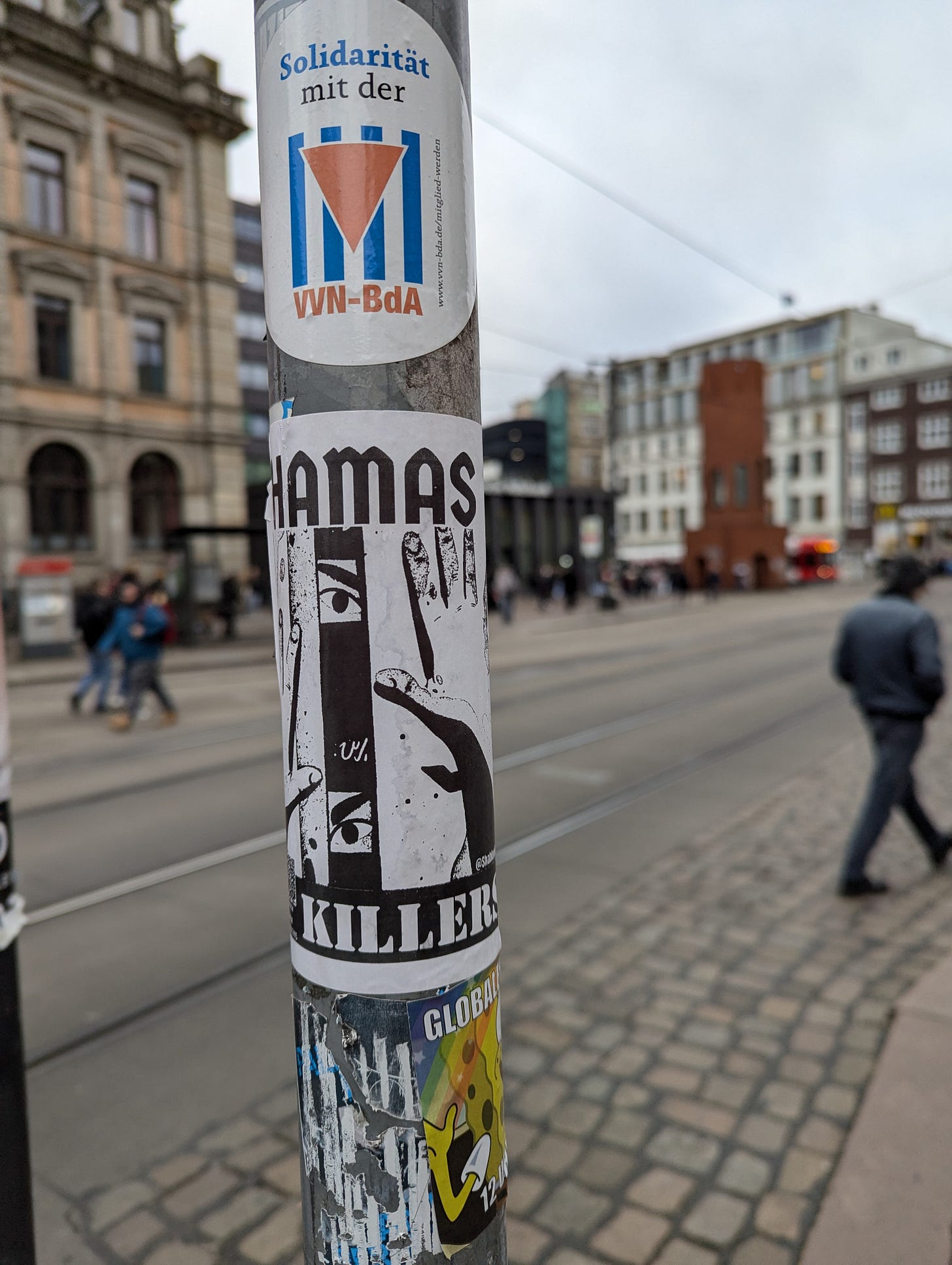
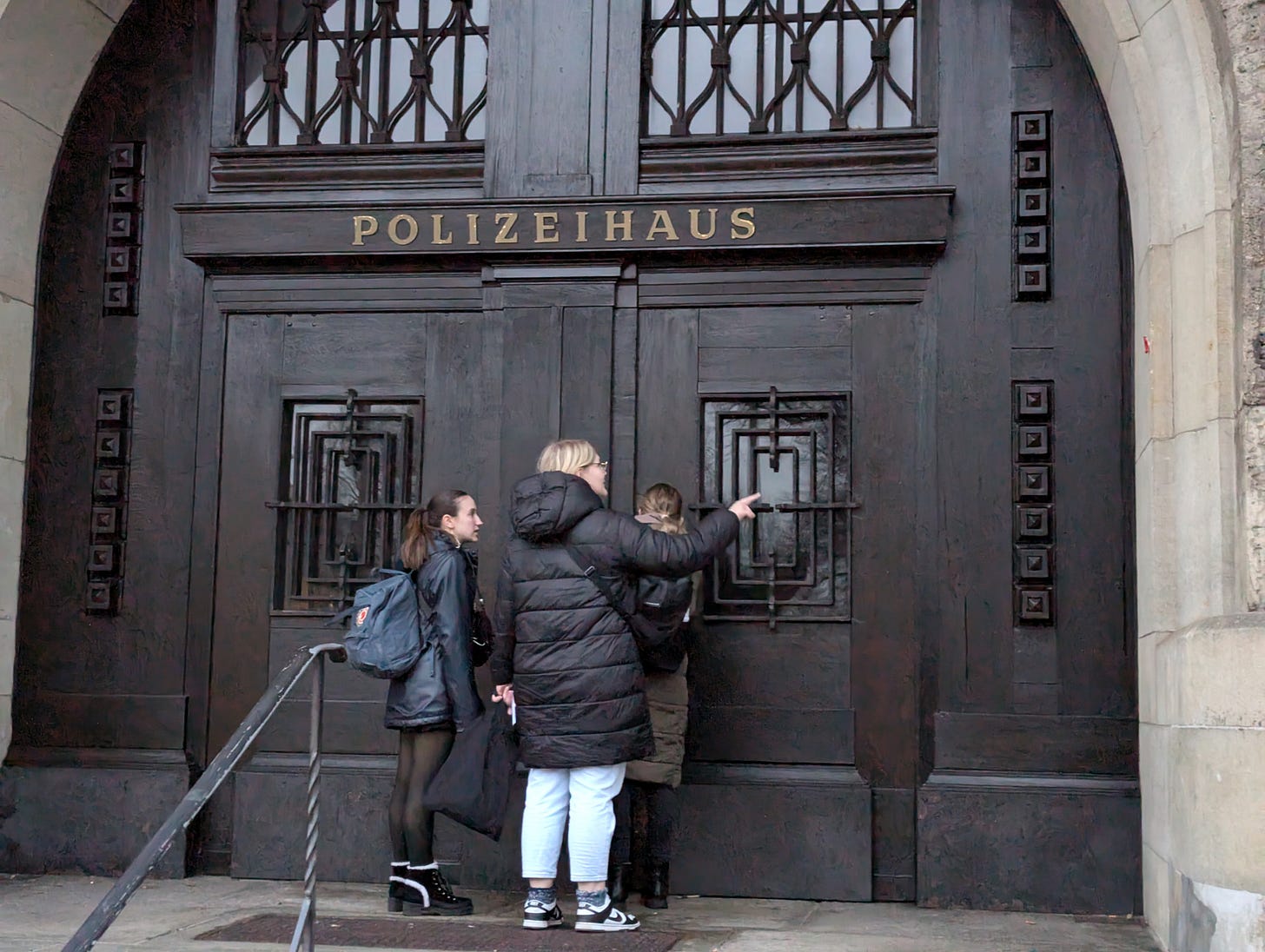
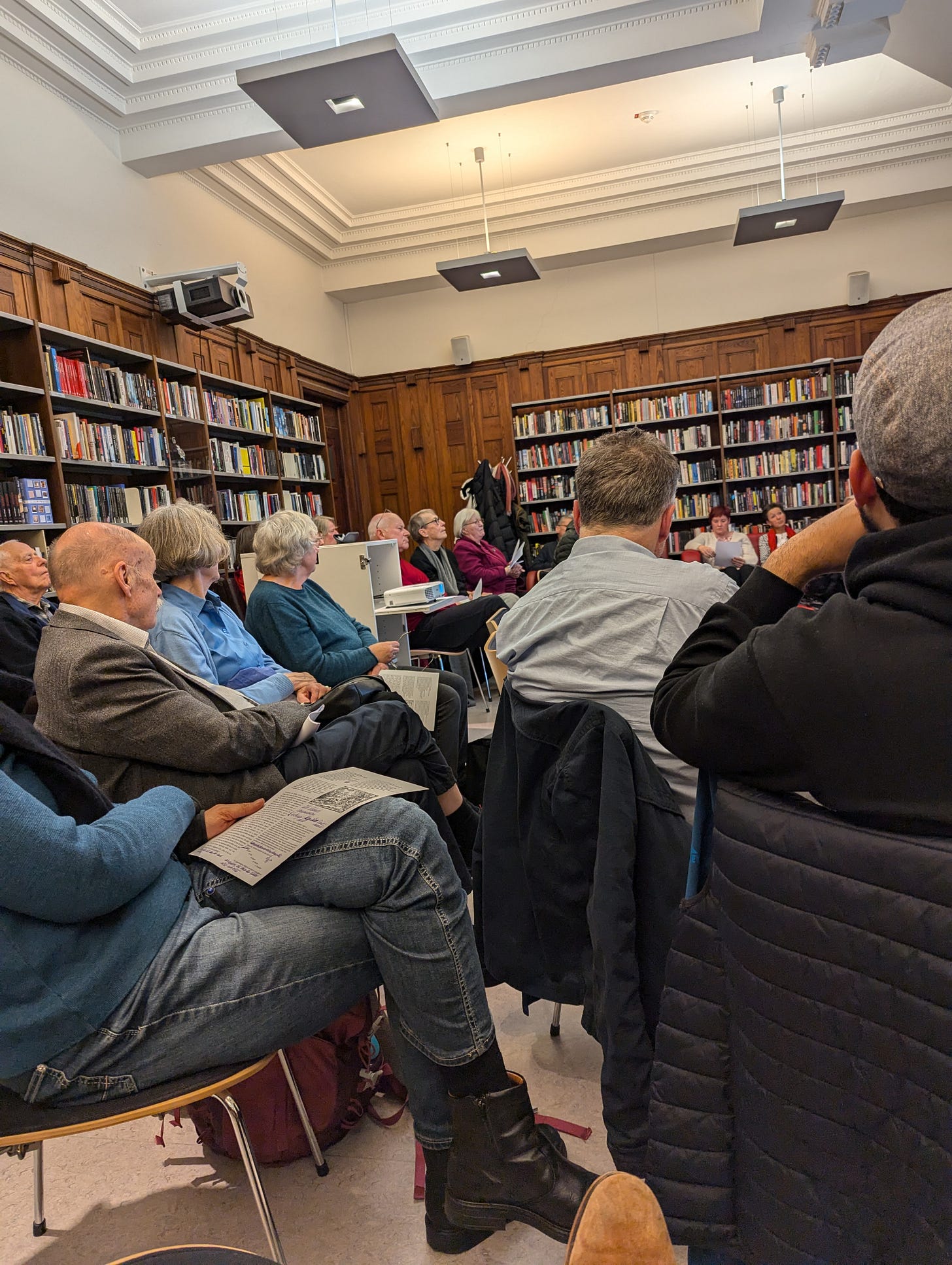
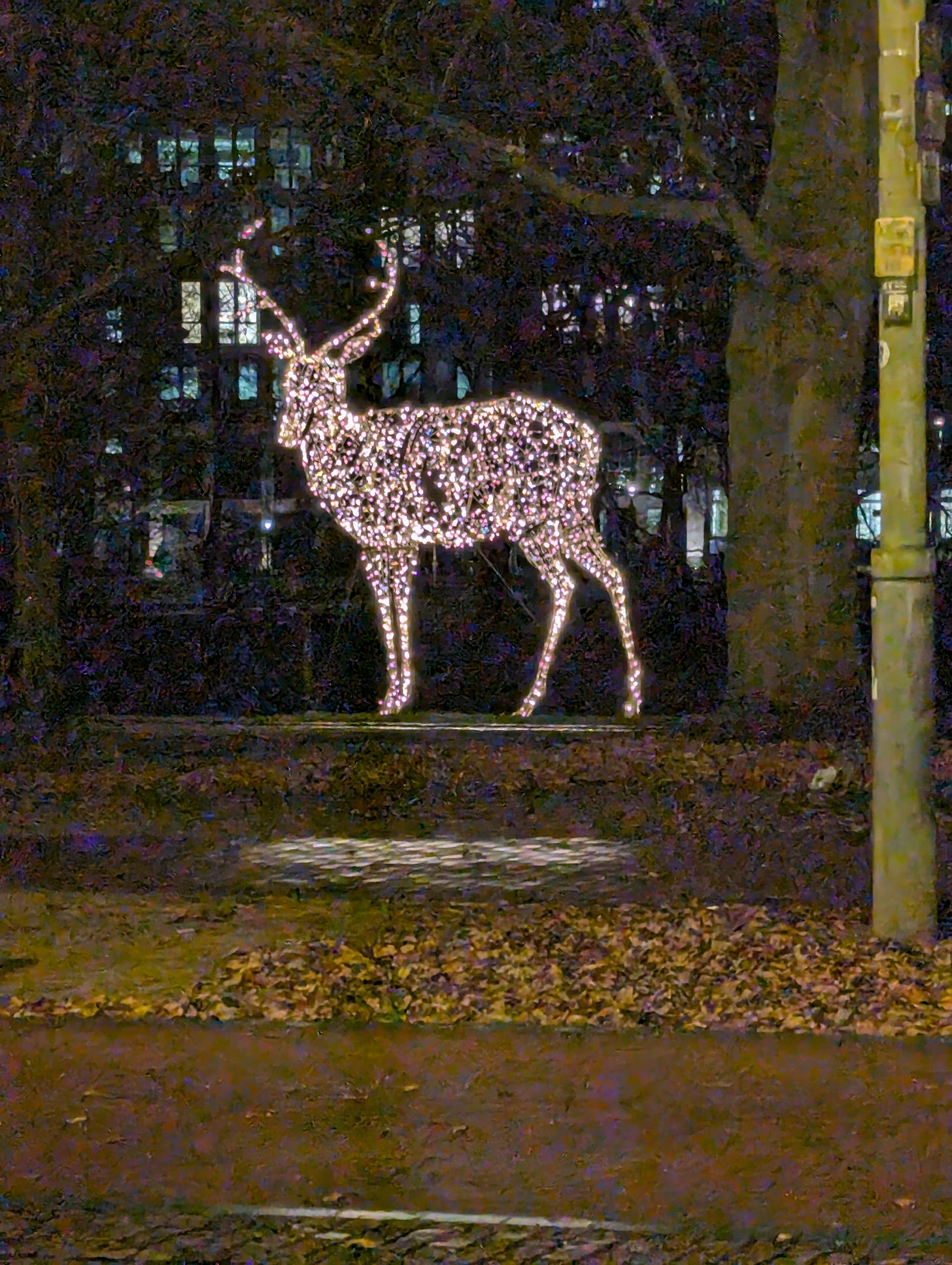
My friend @gabedraws is responsible for the “Fuck Hamas” sticker - find him on Instagram!
Thank you for this opportunity to see and interpret this place, these messages—so far from me in the US, yet not so far as to be unimaginable. Have you see the new movie, A Real Pain? I haven’t been able to bring myself to be a tourist at any of the places my grandparents and great-grandparents lost—left on short notice, I imagine. I have visited one place, Israel/Palestine, where my grandfather was born and lived in an orphanage until he was brought to NYC by some Syrian uncles. It’s hard to imagine going back there either, at this point. I like the “peace” sticker you photographed very much and think it really goes both ways—you can’t say you’re for peace while waging war or promoting violence.